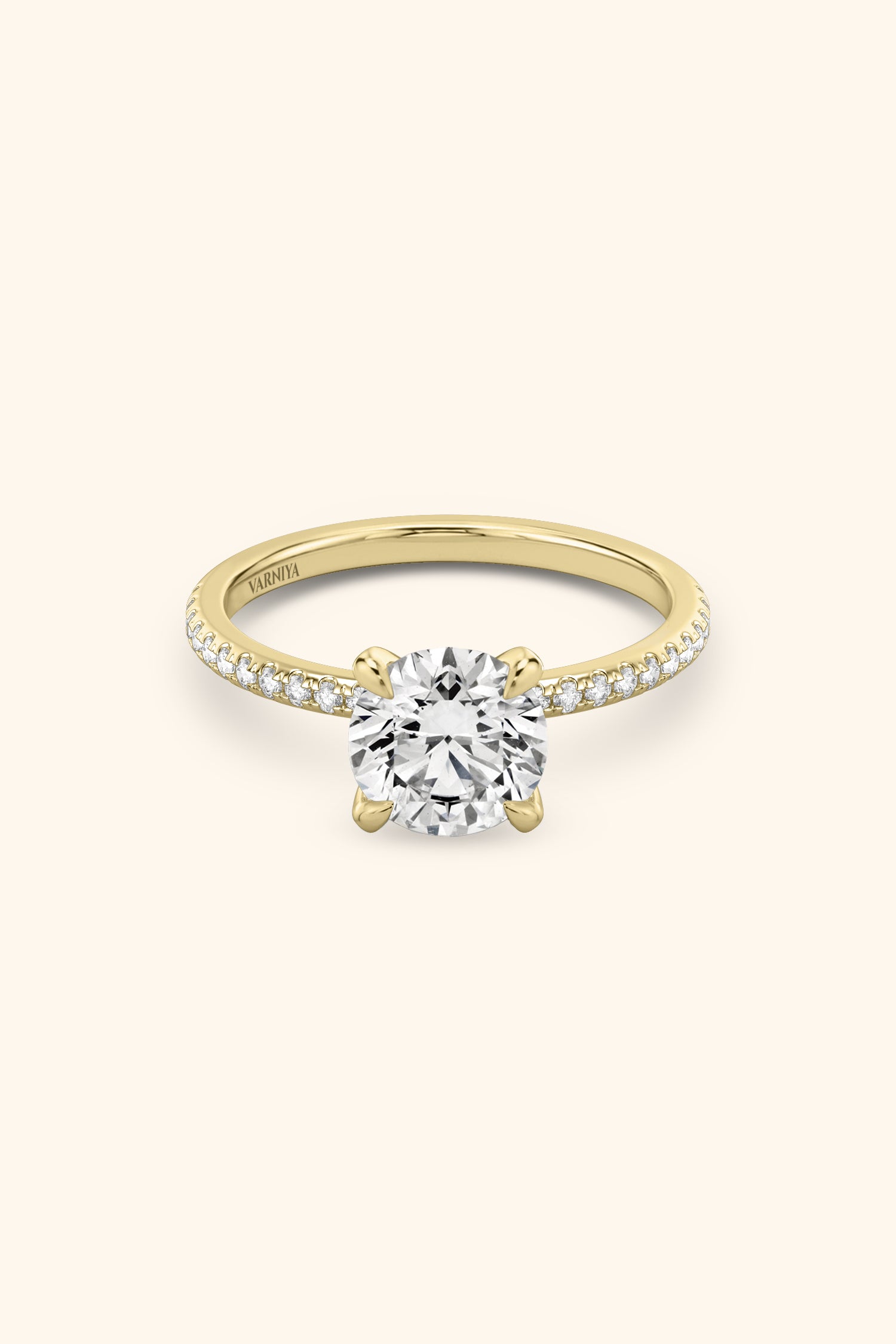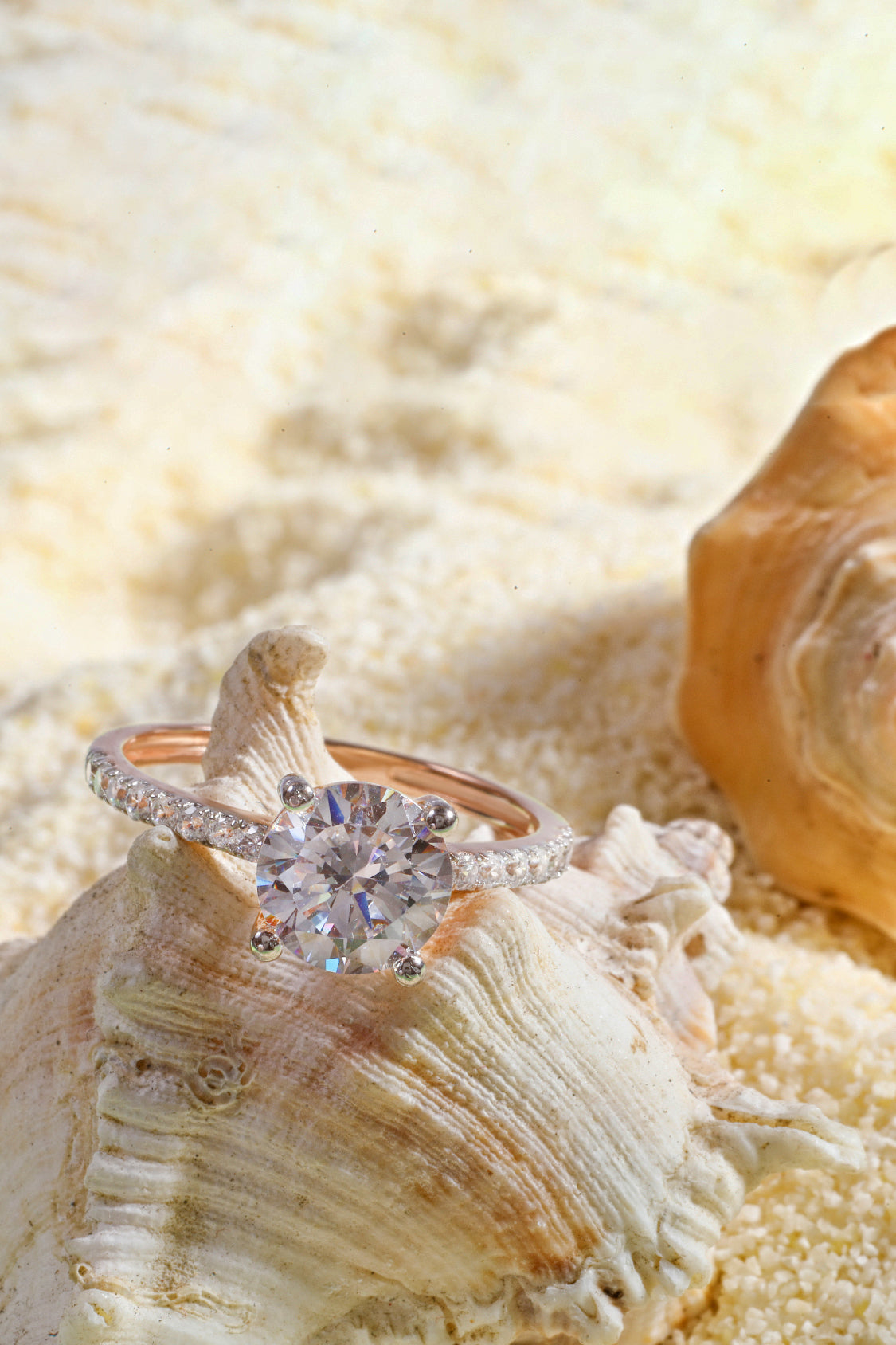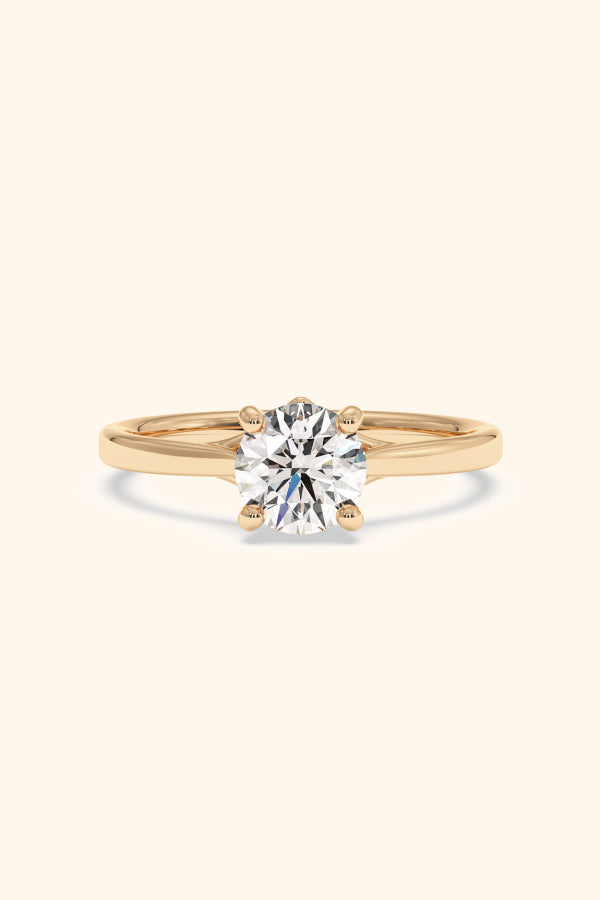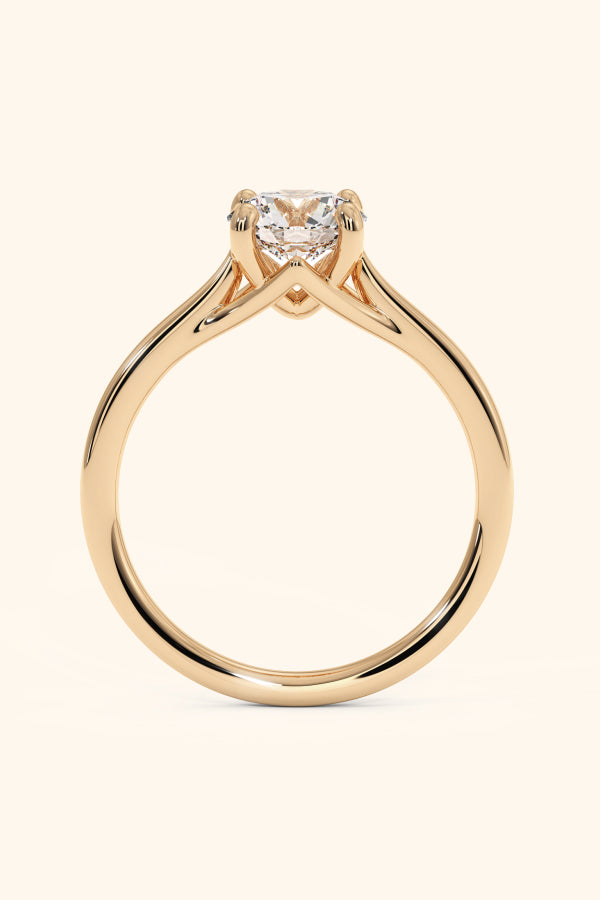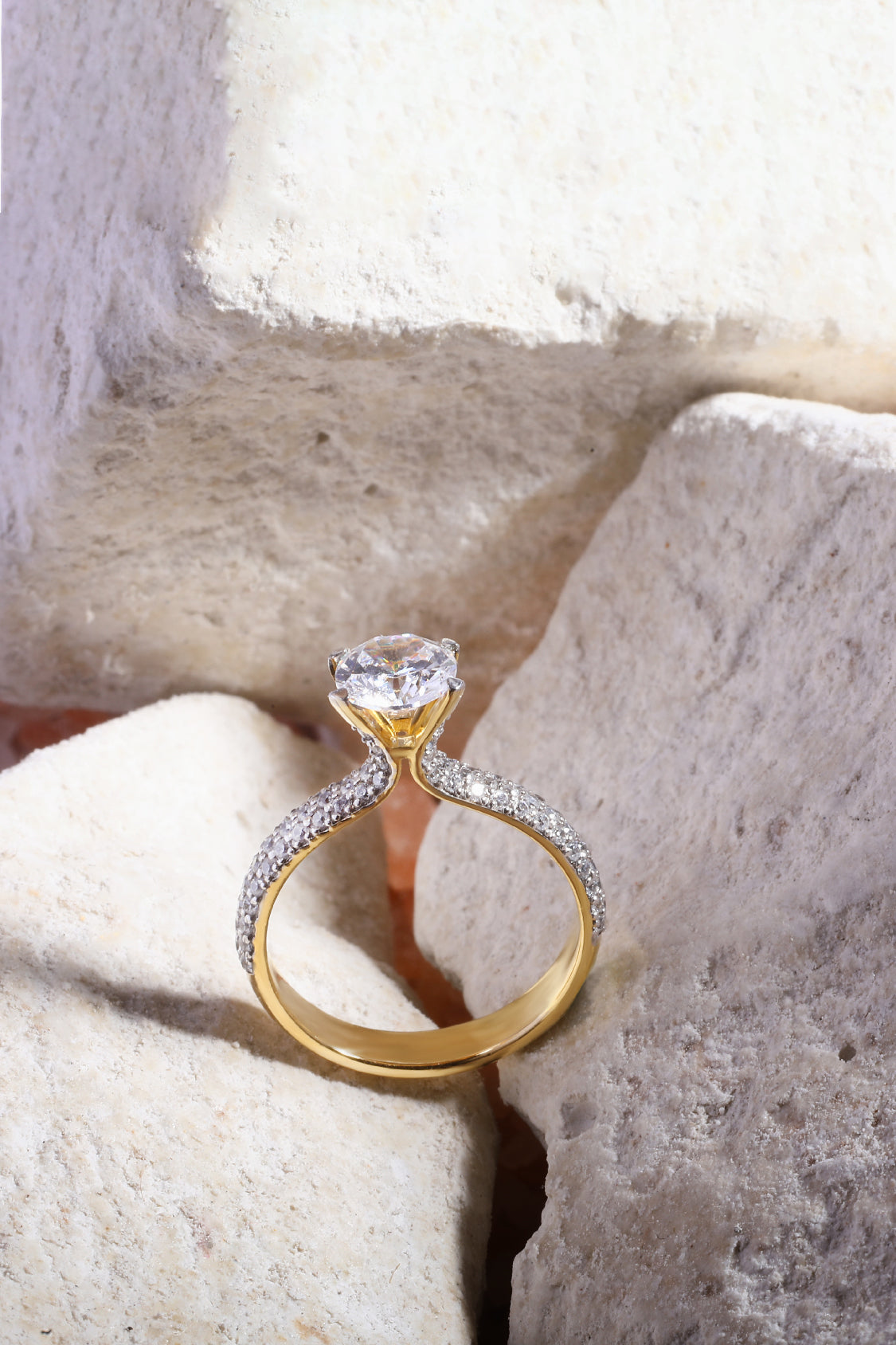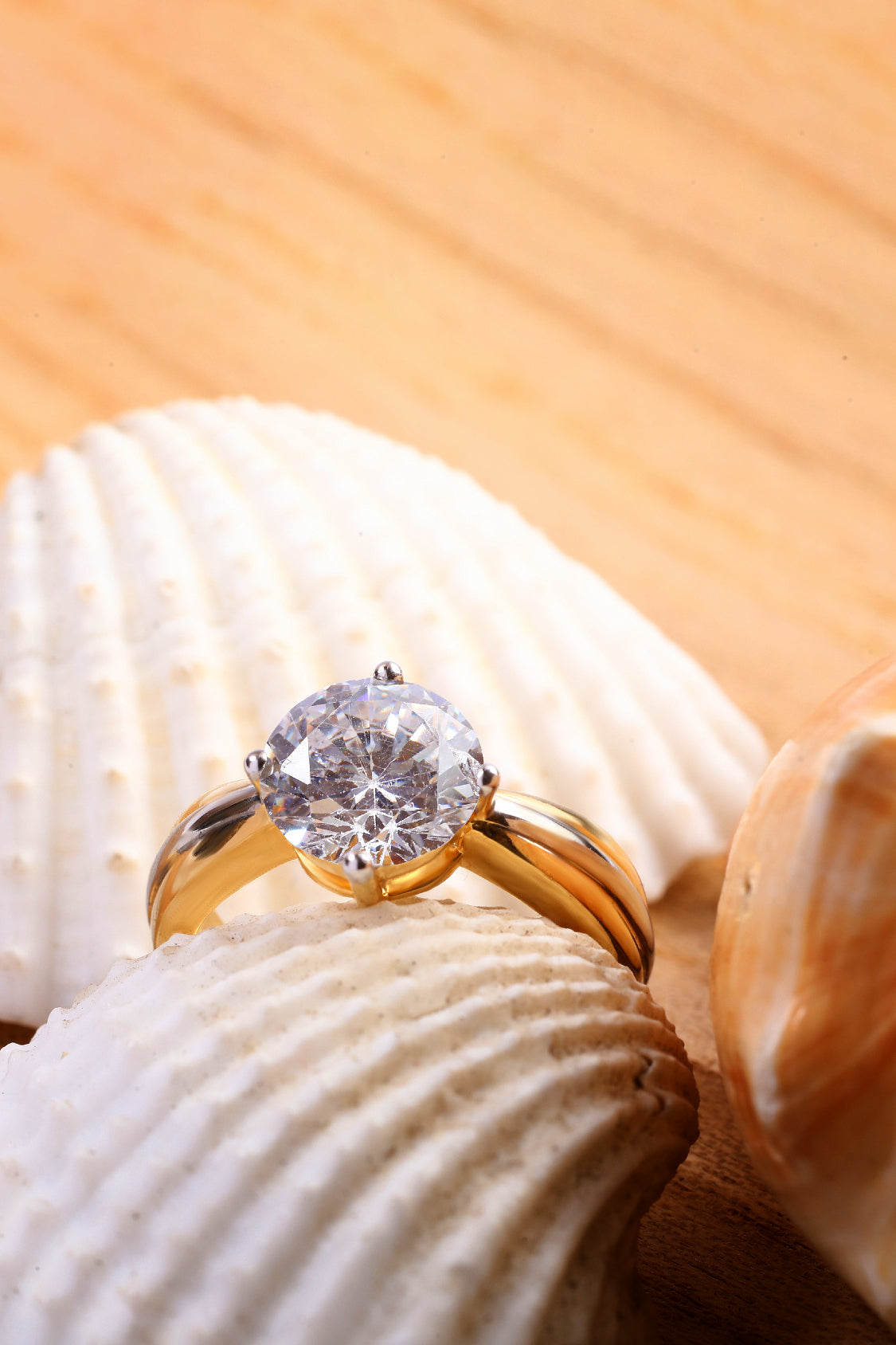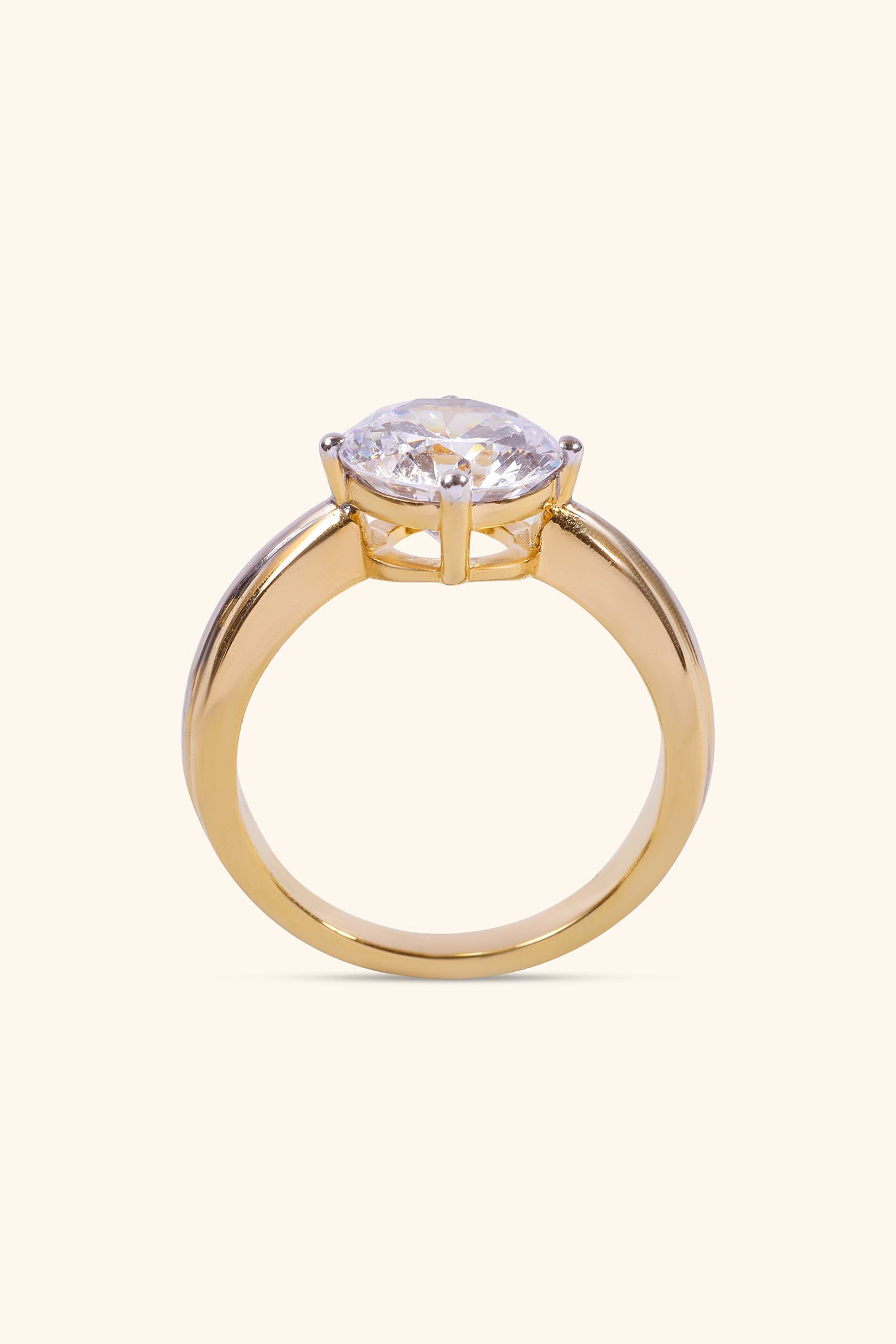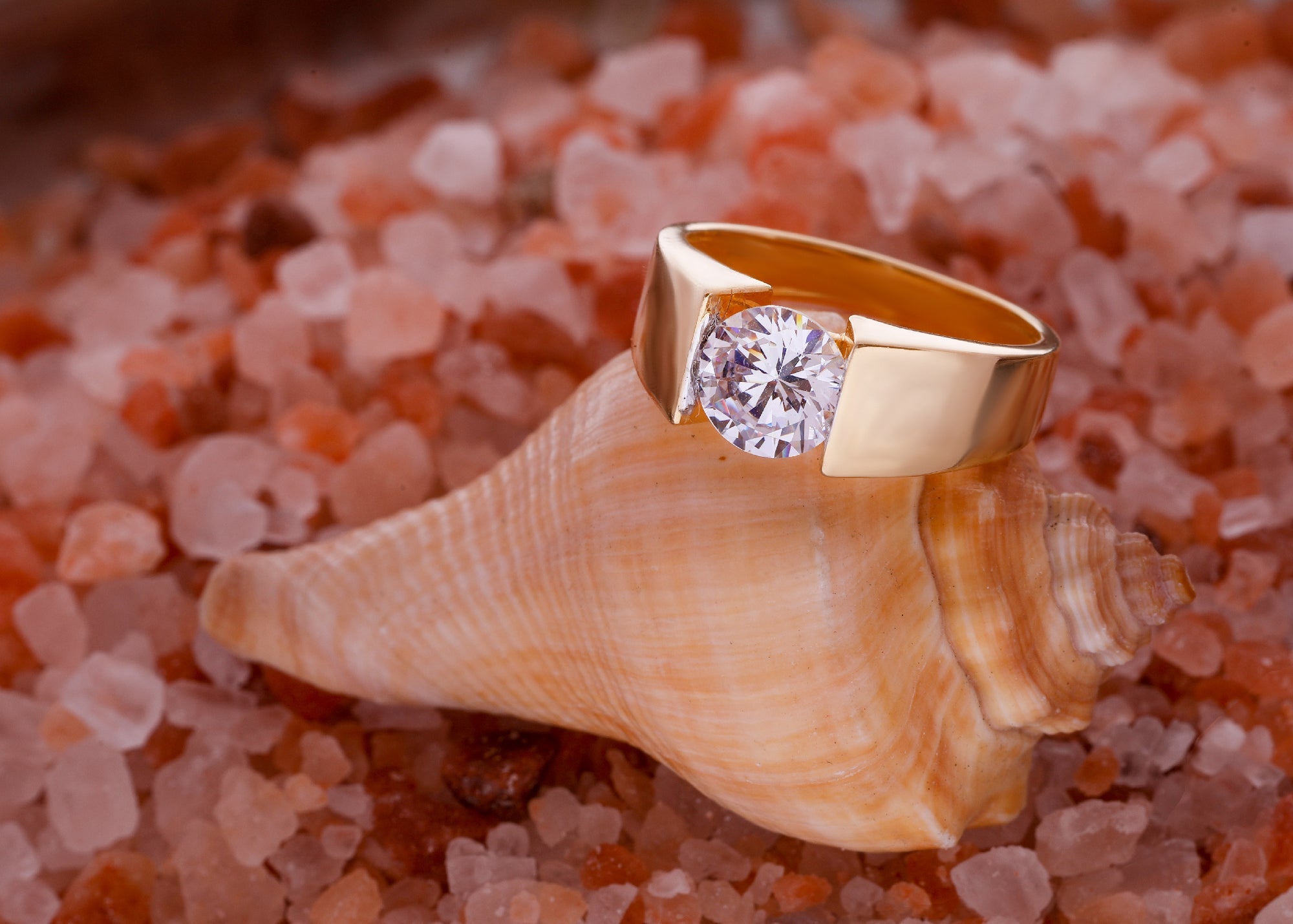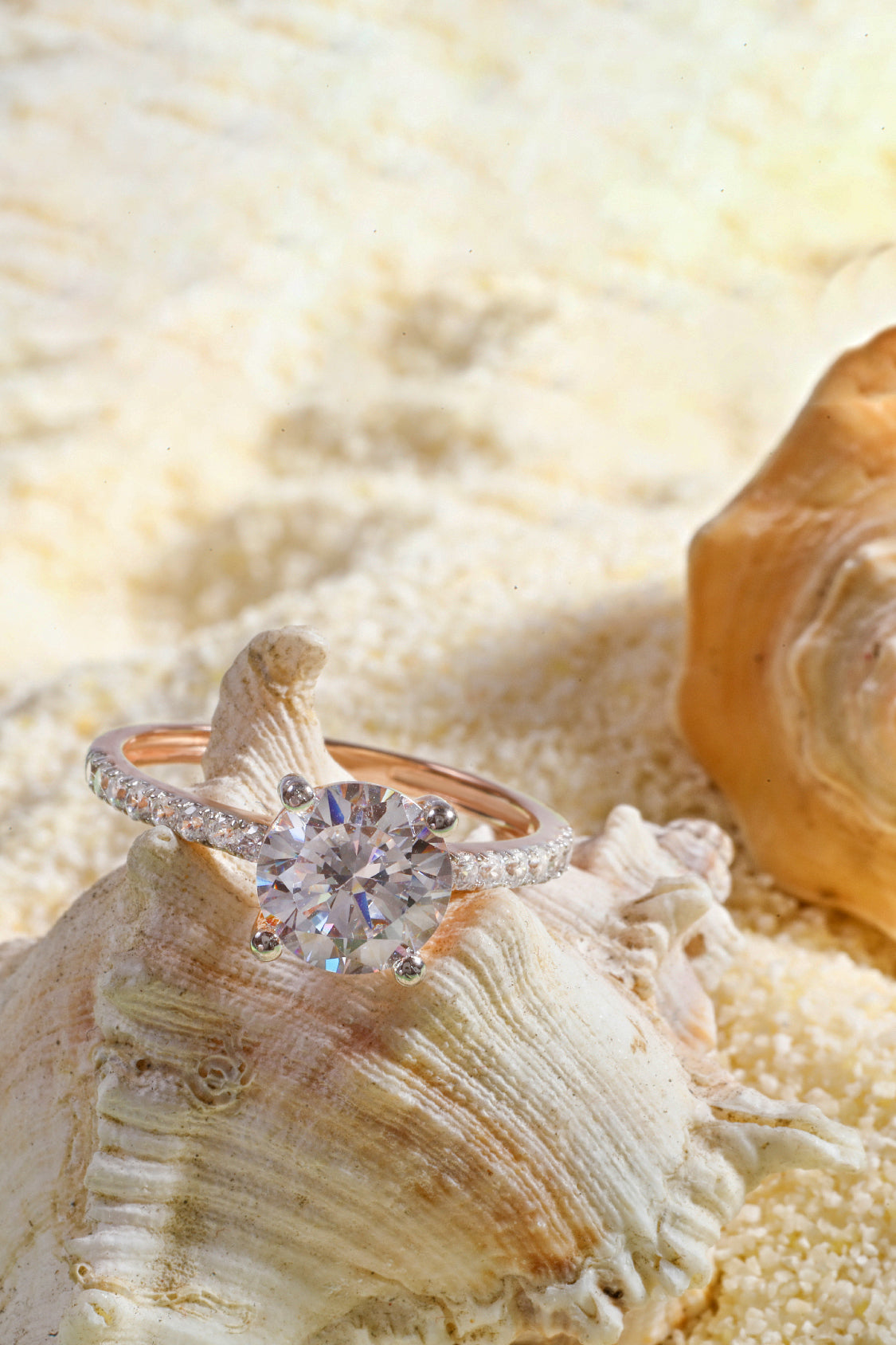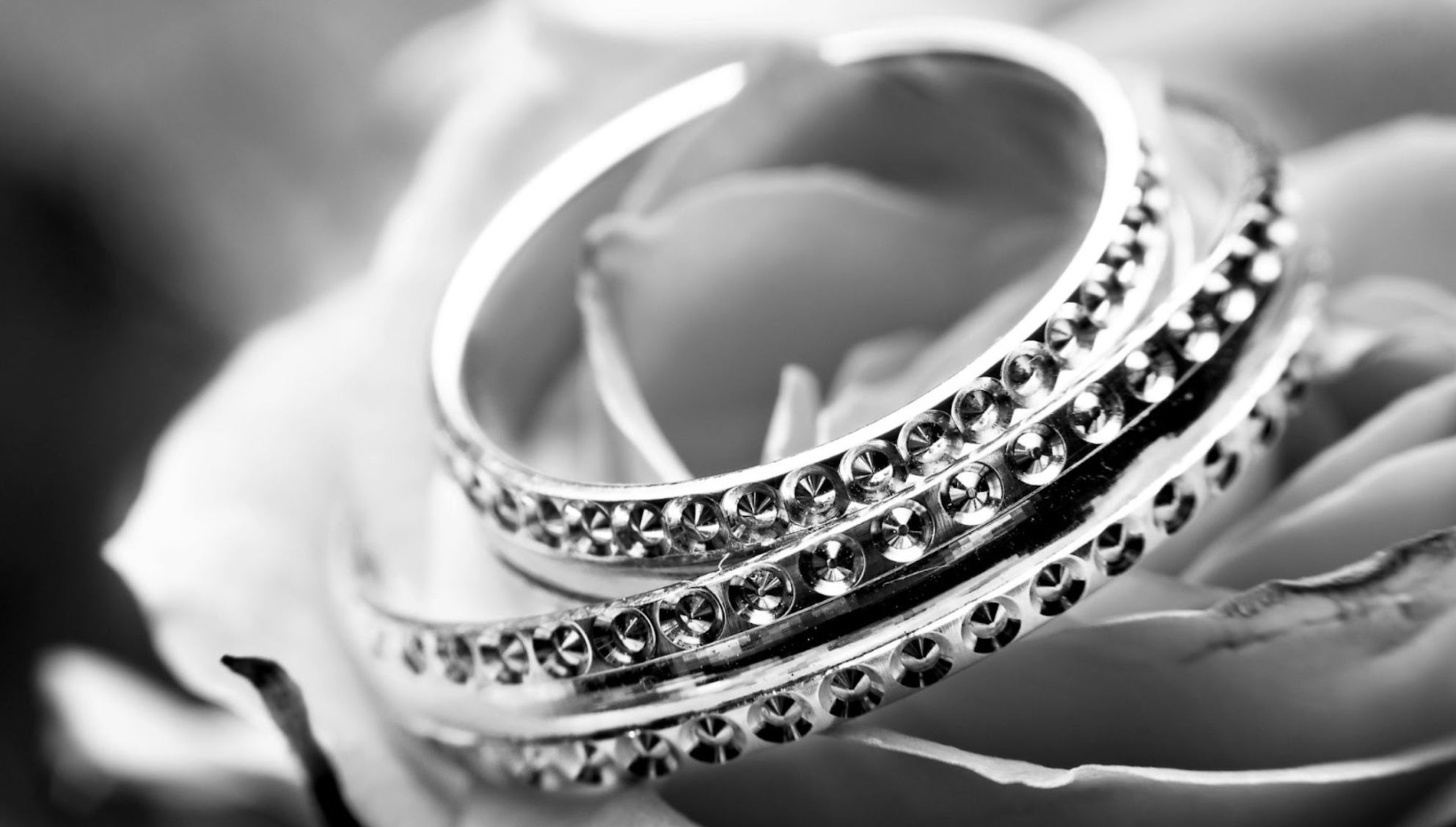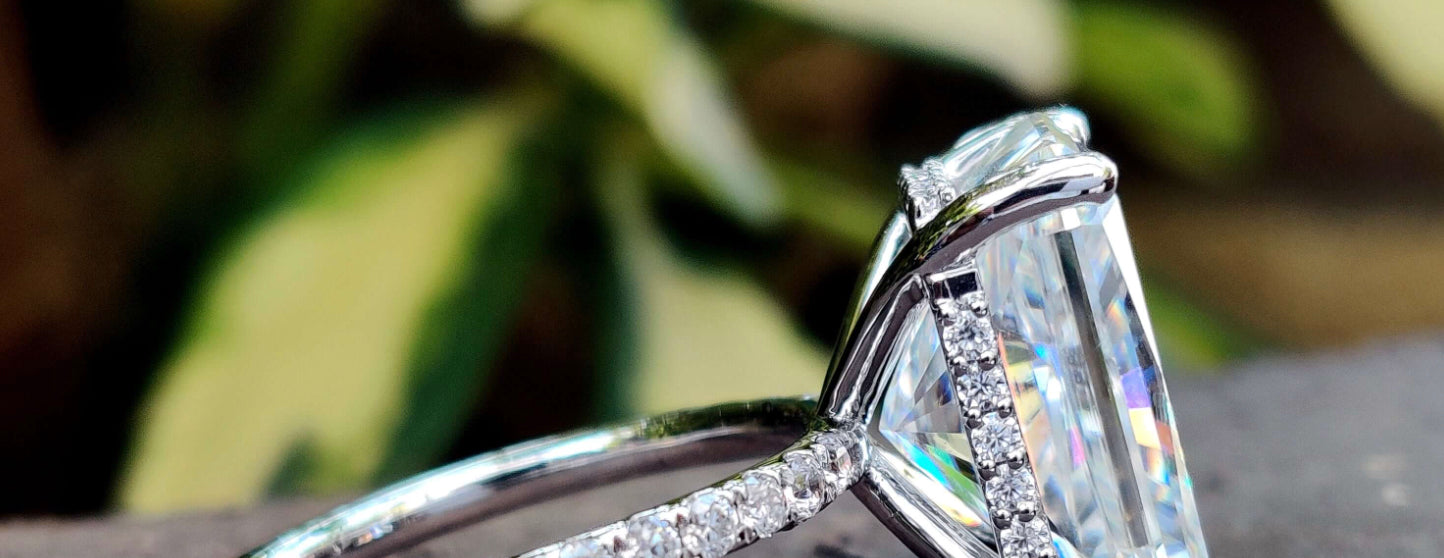
Difference Between Moissanite and Lab-Grown Diamond: What Sets Them Apart?
Discover the difference between moissanite and lab-grown diamond. Explore their key characteristics, pricing, and durability in this quick guide.
What are Lab-Grown Diamonds?
Lab-grown diamonds are real diamonds made in a laboratory setting. Lab-grown diamonds vs natural diamonds is a common debate, but in reality, both have the same chemical composition and brilliance.
Scientists mimic how natural diamonds form deep underground. Instead of waiting millions of years, they speed up the process in just a few weeks!
Another diamond, synthetic diamond is a lab-created gemstone that has the same physical and chemical properties as a mined diamond.
Here’s the cool part—lab-grown diamonds are chemically identical to mined diamonds. Even diamond experts need special tools to tell them apart. Want a real diamond without the large carbon footprint? Lab-created diamonds might be your perfect choice!
What is Moissanite?
Moissanite is a gemstone that looks like a real diamond, but it’s different. It was first discovered in 1893 by a scientist named Henri Moissan in a meteor crater. Unlike lab-grown diamonds, which have the same chemical composition as natural diamonds, moissanite is made of silicon carbide.
Moissanite has a higher refractive index, meaning it sparkles more brilliance than diamonds. It is also a durable gemstone, ranking 9.25 on the Mohs hardness scale—great for everyday wear. Plus, it’s an affordable option compared to diamond engagement rings.
Key Differences Between Moissanite and Lab Diamonds
When comparing moissanite vs lab-grown diamonds, the biggest difference lies in their composition, sparkle, and price.
1. Composition & Structure
Moissanite is made of silicon carbide, while lab-grown diamonds have the same chemical composition as natural diamonds. This means lab diamonds are chemically identical to real diamonds, while moissanite is a diamond simulant with a different structure.
Lab diamonds form in a laboratory setting, where scientists mimic the natural diamond mining process. They grow under high pressure and temperature, just like natural diamonds form deep inside the Earth. Moissanite gemstones, on the other hand, are created using a different method and do not contain pure carbon.
Moissanite scores 9.25 on the Mohs hardness scale, making it a robust gemstone suitable for daily wear. Lab-grown diamonds score a perfect 10 on the Mohs scale, making them harder and more resistant to scratches.
If you want a gemstone that is as close to a real diamond as possible, lab-grown diamonds are the better choice. But if you prefer a super premium look at an affordable option, moissanite is a great alternative.
2. Brilliance & Fire
Moissanite has a higher refractive index than lab diamonds, meaning it sparkles even more. This extra sparkle, called fire, creates rainbow-like flashes when light hits it. Some people love this effect, while others prefer the classic, white sparkle of diamonds.
Lab-grown diamonds reflect white light in a more natural way. This is because their chemical makeup is identical to that of natural diamonds. Moissanite’s sparkle is more colorful, which can make it stand out, especially in larger stones.
3. Hardness & Durability
Hardness tells us how scratch-resistant a gemstone is. It is measured using the Mohs hardness scale, which ranks materials from 1 (softest) to 10 (hardest).
-
Lab-grown diamonds score a perfect 10 on the Mohs scale. They are just as tough as natural diamonds, making them perfect for everyday wear.
-
Moissanite gemstones rank 9.25 on the Mohs hardness scale. This makes them one of the most durable gemstones, but they are still slightly softer than lab diamonds.
Both moissanite and lab-grown diamonds are durable gemstones that last a lifetime. If you need the hardest option, go with a lab diamond. If you want a strong, scratch-resistant gemstone at a lower cost, choose moissanite.
4. Price & Affordability
If you’re on a budget, price matters. Here’s how moissanite and lab-grown diamonds compare:
-
On average cost lab grown diamonds are 50-70% less than mined diamonds but are still expensive. The price depends on carat weight and quality.
-
Moissanite gemstones are much cheaper. Even a large moissanite stone costs a fraction of a diamond engagement ring.
5. Color & Appearance
Not all diamonds are pure white. The same goes for moissanite gemstones.
-
Lab-grown diamonds come in different shades, just like natural diamonds. They can be colorless, near-colorless, or fancy-colored, depending on how they are made.
-
Moissanite gemstones often have a slightly yellow, green, or gray tint, especially in larger stones. Under bright light, moissanite produces a higher refractive index, meaning it sparkles with rainbow colors.
6. Ethical & Environmental Impact
Many people prefer lab-grown diamonds or moissanite because they are ethically sourced and do not require diamond mining.
-
Natural diamonds are mined, which can cause environmental damage and involve unethical labor practices.
-
Lab-grown diamonds require no mining and have a smaller carbon footprint. They are made in a laboratory setting using clean energy and advanced technology.
-
Moissanite gemstones are created using silicon carbide, which is sustainable and does not harm the planet.
7. Rarity & Origin
Moissanite and lab-grown diamonds come from very different places.
-
Moissanite is incredibly rare in nature. It was first discovered in a meteor crater by a scientist named Henri Moissan. Since natural moissanite is so hard to find, all moissanite gemstones today are made in a laboratory setting.
-
Lab-grown diamonds are made in a lab too, but they have the same chemical composition as natural diamonds. Scientists recreate the process of natural diamonds forming deep inside the Earth.
Should you Choose Moissanite for your Engagement Ring?
Is Moissanite a Durable Choice?
Yes! Moissanite is one of the most durable gemstones available.
-
It ranks 9.25 on the Mohs hardness scale, making it harder than most gemstones but slightly softer than real diamonds.
-
Moissanite is scratch-resistant, making it perfect for everyday wear.
-
Unlike cubic zirconia, moissanite does not become cloudy over time.
If you want a super premium gemstone that lasts a lifetime, moissanite is a great choice.
Moissanite is a much more affordable option than lab-grown diamonds.
-
A 1-carat moissanite costs a fraction of a diamond engagement ring of the same size.
-
If you want a larger stone without spending thousands, moissanite is a great choice.
Should you choose moissanite for your engagement ring?
-
If you want a diamond alternative with more brilliance, moissanite is perfect.
-
If you prefer a real diamond, go for lab-grown diamonds instead.
Either way, you’ll get a stunning, durable, and ethical ring that shines for a lifetime!
Shop Exquisite Lab Grown Diamond Engagement Rings – Varniya Collection
Discover the brilliance of lab-grown diamonds with Varniya's exquisite engagement ring collection. Rooted in the legacy of Vummidi Jewellers since 1900, Varniya offers sustainable and ethically crafted jewelry that combines timeless elegance with modern design.
Why Choose Lab-Grown Diamonds?
Lab-grown diamonds are real diamonds created in a controlled environment, sharing the same physical, chemical, and optical properties as mined diamonds. They are an eco-friendly alternative, reducing the environmental impact associated with traditional diamond mining.
Choosing lab-grown diamonds means embracing sustainability without compromising on quality or beauty.
Explore Varniya's Engagement Ring Collection
Varniya's engagement rings are meticulously crafted to celebrate your unique love story. Here are some standout pieces from their collection:
1. Valentina Ring with a Round Solitaire
A classic design featuring a round brilliant solitaire, symbolizing enduring love. This ring exudes simplicity and grace, making it a timeless choice.
2. Aurora Triple Pavé Ring with a Round Solitaire
This ring showcases a round solitaire encircled by three rows of pavé-set diamonds, adding extra sparkle and sophistication.
3. Esperanza Dual-tone Ring with a Round Solitaire
Featuring a round solitaire set in a dual-tone band, this ring blends contemporary style with classic elegance.
4. Gabriela with Round Brilliant Solitaire Ring
A minimalist design highlighting a round brilliant solitaire, perfect for those who appreciate understated beauty.
5. Windsor Triple Banded Ring with a Round Solitaire
This unique design features a round solitaire atop a triple-banded ring, offering a modern twist to a classic style.
Diamond Alternatives: Exploring Unique and Affordable Choices
1. White Sapphire – The Classic Choice
White sapphire is a naturally occurring mineral that looks like a diamond but costs much less.
-
It is a durable gemstone, ranking 9 on the Mohs hardness scale.
-
It has a beautiful, clear look but is less brilliant than diamonds.
-
Unlike cubic zirconia, white sapphire does not cloud over time.
-
Since it is a naturally occurring stone, no diamond mining is required.
White sapphire is a great choice if you want a natural counterpart to diamonds without the high price.
2. Cubic Zirconia (CZ) – The Budget Star
Cubic zirconia is one of the most popular diamond alternatives because it is affordable and looks like a diamond.
-
It is made of zirconium dioxide and is created in a laboratory setting.
-
It has a higher refractive index than diamonds, meaning it sparkles a lot.
-
It ranks 8-8.5 on the Mohs scale, making it less durable than white sapphire or diamonds.
-
Over time, it may become cloudy, especially with frequent wear.
If you want a super premium look for a budget-friendly price, cubic zirconia is the way to go.
3. Morganite – The Romantic Rose-Tinted Gem
Morganite is a soft pink gemstone that symbolizes love and warmth.
-
It belongs to the beryl family, just like emerald and aquamarine.
-
It has a delicate rose color, making it perfect for a romantic engagement ring.
-
On the Mohs hardness scale, it ranks 7.5 to 8, which means it’s durable but softer than moissanite gemstones or diamonds.
-
Unlike cubic zirconia, morganite does not lose its color over time.
If you want a gemstone that looks soft, romantic, and vintage, morganite is a great choice.
4. Emerald & Ruby – The Bold Statement
Emerald and ruby are two of the most precious gemstones in the world. They are perfect for those who love color and elegance.
-
Emeralds have a deep green color and are made from a naturally occurring mineral called beryl.
-
Rubies are bright red gemstones made from corundum, the same material as sapphires.
-
Both rank 9 on the Mohs hardness scale, making them as tough as moissanite and lab-grown diamonds.
-
Unlike lab-created gemstones, natural emeralds and rubies have unique inclusions that make each stone one of a kind.
If you want a bold, regal, and luxurious gemstone, emerald or ruby is a stunning alternative to diamonds.
5. Opal – The Dreamy, Iridescent Beauty
Opal is one of the most unique and colorful gemstones available. It is known for its shimmering, rainbow-like colors that shift when moved.
-
Unlike moissanite gemstones or lab-grown diamonds, opal does not have a clear sparkle. Instead, it has a play of color, meaning it changes shades under different light.
-
It is a naturally occurring mineral, but lab-created opals are also available.
-
Opal ranks 5.5 to 6.5 on the Mohs hardness scale, making it softer than cubic zirconia, white sapphire, or real diamonds.
-
Because it is softer, it is best for pendants and earrings rather than everyday wear rings.
If you love one-of-a-kind gemstones with a dreamy and artistic look, opal is a stunning choice.
Common Misconceptions and FAQs
1. Are lab-grown diamonds essentially perfect?
Some people think lab-grown diamonds are flawless. This is not true.
Lab diamonds have the same chemical composition as natural diamonds. They can still have small imperfections, just like real diamonds. Some super premium lab diamonds are made to be almost flawless, but not all are.
If you want a perfect diamond, a laboratory setting can reduce flaws, but no diamond is essentially perfect.
2. Is moissanite made of silicon carbide or zirconium dioxide?
Moissanite is not the same as cubic zirconia.
Moissanite gemstones are made of silicon carbide. Cubic zirconia is made of zirconium dioxide. Moissanite is more durable, ranking 9.25 on the Mohs hardness scale.
If you want a diamond alternative that lasts, moissanite is the better option.
3. How does moissanite compare to cubic zirconia and white sapphire?
Many people confuse moissanite, cubic zirconia, and white sapphire.
Moissanite has more brilliance and ranks higher on the Mohs scale. Cubic zirconia is an affordable option but can become cloudy over time. White sapphire is a naturally occurring mineral but lacks the fire of moissanite.
If you want a long-lasting gemstone, moissanite is your best choice.
Both moissanite and lab-grown diamonds are stunning, durable, and ethical choices. If you want a real diamond at a lower price, go for lab-grown diamonds. If you prefer extra brilliance and affordability, moissanite is a great option. Either way, you get a beautiful, lasting gemstone that fits your style and budget.


